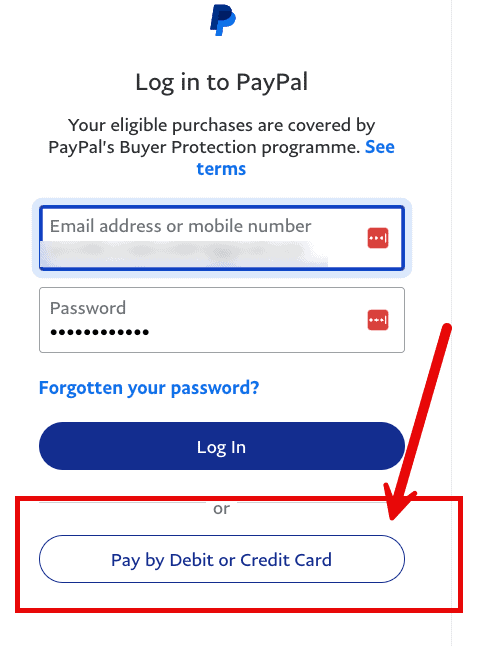Some self-help training and useful posts on healthy living with Thai Massage.
 While it’s easy enough to pop down to the grocery store and buy butter, yogurt, or kefir, it can be very rewarding—and easier than you think—to make your own products at home. Making staple dairy foods at home allows you to control what goes into them, control the process, and reconnect to the traditional way of doing things.
While it’s easy enough to pop down to the grocery store and buy butter, yogurt, or kefir, it can be very rewarding—and easier than you think—to make your own products at home. Making staple dairy foods at home allows you to control what goes into them, control the process, and reconnect to the traditional way of doing things.
Yogurt and kefir are also fermented foods that deliver those oh-so-important to feed the beneficial microbes in your gut. Rather than rely on store-bought products, which often contain sugar and other additives you wish to avoid, why not make your own at home? Being able to make your own butter, yogurt, and kefir gives you flexibility. It gives you power. Most importantly, it gives you agency: the ability to control what you feed yourself or your family.
How to Make Butter
There are some great butters widely available in grocery stores, but sometimes you just want to make something at home. Sometimes you want truly fresh butter.

There are a few ways to make butter at home. First, there’s food processor butter. You’ll need:
- 2 cups of room temperature heavy whipping cream free of additives or binders or stabilizers. Ingredients should read “heavy cream” and nothing else.
- 1 cup of ice cold water
- 1 food processor
The process:
- Fill food processor about ½ full with cream and blend at medium speed. As you blend, you will notice that the cream transitions from sloshy to frothy to whipped cream to a very stiff whipped cream.
- Keep blending until the mixture “seizes” and the whirring you previously enjoyed will now go back to sloshing. This is the butter separating from the buttermilk.
- Drain the buttermilk (save it for later), then add some of the ice cold water, blend further, and discard the water when it separates.
- Repeat until the water comes away clear (a process known as washing the butter). Place butter in a large jar and shake to remove any excess water.
- Store in ramekin, butter dish or in rolls of wax paper. Add salt if you like. Should yield approximately one cup of butter.
Next, there’s jar butter. You’ll need:
- Room temperature heavy cream
- A quart jar with a lid
The process:
- Fill the jar about halfway.
- Cover it and shake until the fat clumps together and forms a ball, and the buttermilk separates. This could take about ten minutes.
- Pour out the buttermilk into a separate container, reserve the clumped fat (butter), and let any excess liquid drain off.
- To get all the excess buttermilk out for long term storage, knead the butter under running cold water.
- Salt if you like and store.
And finally, there’s this . I’ve heard good things from several people.
To spice things up, add a few tablespoons of yogurt to raw cream and let it sit out for a day or two. Once it tastes a little cultured or tangy, use it to make butter.
How to Make Yogurt
Yogurt is one of the oldest ways to consume milk, and of the most nutritious. Good yogurt has little to no lactose (the bacteria digest it), so even the lactose intolerant can usually enjoy it. If you can tolerate dairy, I’d recommend making and eating your own .

What you’ll need:
- A quart of high-quality milk. Raw isn’t necessary because you’ll be heating it, although using raw milk will usually ensure you’re using a high-quality milk.
- Starter culture
- Cooking thermometer
A starter culture is basically any compound that already has live active cultures in it. You can purchase dry cultures at your local health store or you can use plain yogurt from a previous batch or purchased at a grocery store. However, when doing this, be sure to select a brand of plain yogurt that clearly indicates on its label that it contains live active cultures or else this will not work. To maintain the culture, store the yogurt in the fridge. It’s best to use a yogurt you already enjoy—chances are, the yogurt you make using it will taste similar.
The process:
- Pour the milk into a small sauce pan and over low medium heat, heat the milk until it hits 180 degrees F.
- Remove from heat and let it cool to 105 degrees F.
- Stir in the yogurt/starter culture and pour into a glass jar or bowl. Cover it.
- Allow the yogurt to incubate for at least 6-7 hours at 105-112 degrees F. You can do this by using the “yogurt” setting on an Instant Pot, using a yogurt maker, or placing the fermenting yogurt in a pan of hot water whose temperature you monitor and maintain in the 105-112 range.
- Once the yogurt is thick enough that you can press a spoon into it and see the impression retained, it’s probably ready. Taste it and if you’re happy, store in the fridge. If you want it sourer (indicating more lactose digestion), keep it fermenting.
To make Greek-style yogurt, let your finished yogurt drain in a colander lined with cheesecloth. After all the whey has drained out into a bowl, you’re left with the yogurt solids: thick, creamy, and casein-y. Reserve the whey to start new yogurt batches or to just drink straight.
Experiment with different yogurt starter cultures. You can even make yogurt using specific probiotic strains, like .
Bonus: Turn your homemade yogurt into delicious, herby !
How to Make Kefir
Kefir is “super yogurt”—milk cultured with over a dozen bacterial strains and yeasts. Research shows that kefir is full of unique peptides with beneficial physiological and metabolic effects, most of which have yet to be classified but can assuredly be assumed to be “good for you.” You can find kefir in most grocery stores these days, but the best stuff is made at home using live kefir grains.

You’ll need:
- 1 tbsp kefir grains
- 1 quart whole milk, ideally raw and organic but if not, high quality un-homogenized milk will work
- Glass jar
You can . You can also use Craigslist to try finding someone local with kefir grains to sell (or gift).
The process:
- Add your milk to the jar.
- Add the kefir grains to the jar and cover with a clean cloth with a rubber band.
- Leave it out on the counter for 1-3 days. The warmer it is, the faster the fermentation occurs.
- When the contents have thickened and/or separated into whey and solids, it’s ready.
- Pour the kefir into a plastic colander set over a glass bowl. Some say metal will kill the kefir, although I doubt that, but let’s use plastic just to be safe.
- Scoop out the grains from the colander and let the liquid fall through into the bowl below, gently pressing the mixture to get everything. The grains will feel solid—they’re unmistakable.
- Add the grains to another batch of milk to keep the kefir flowing and put the finished kefir into the fridge.
You can also add a quarter to a half cup of finished store-bought kefir to a jar of room temperature milk and leave out on the counter. It will ferment, although it won’t be quite the same.
That’s it: a few basic ways to make your own butter, yogurt, and kefir. Have you ever made your own? Do you? Let me know how you do it down below, and thanks for reading!
(function($) {
$(“#dfnhBkd”).load(“https://www.marksdailyapple.com/wp-admin/admin-ajax.php?action=dfads_ajax_load_ads&groups=674&limit=1&orderby=random&order=ASC&container_id=&container_html=none&container_class=&ad_html=div&ad_class=&callback_function=&return_javascript=0&_block_id=dfnhBkd” );
})( jQuery );
The post appeared first on .
The above article How to Make Butter, Yogurt, and Kefir at Home was published on this site.
We hope you found the above of help and of interest. Similar content can be found on our main sitewebsite Thai Massage Greenock.
Please let me have your feedback in the comments section below.
Let us know what topics we should cover for you in future.
Thai Massage Newsletter
To make sure you don’t miss out on any new posts or promotions that we introduce, sign up for our newsletter.
Once a month we run a special promotion for our newsletter members, so sign up now to make sure you don’t miss out.
It’s free and full of great health and nutrition tips and advice on how we can help you achieve your health and fitness goals.





